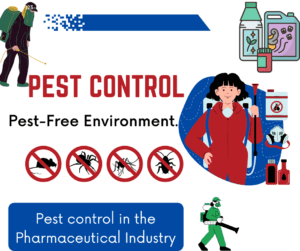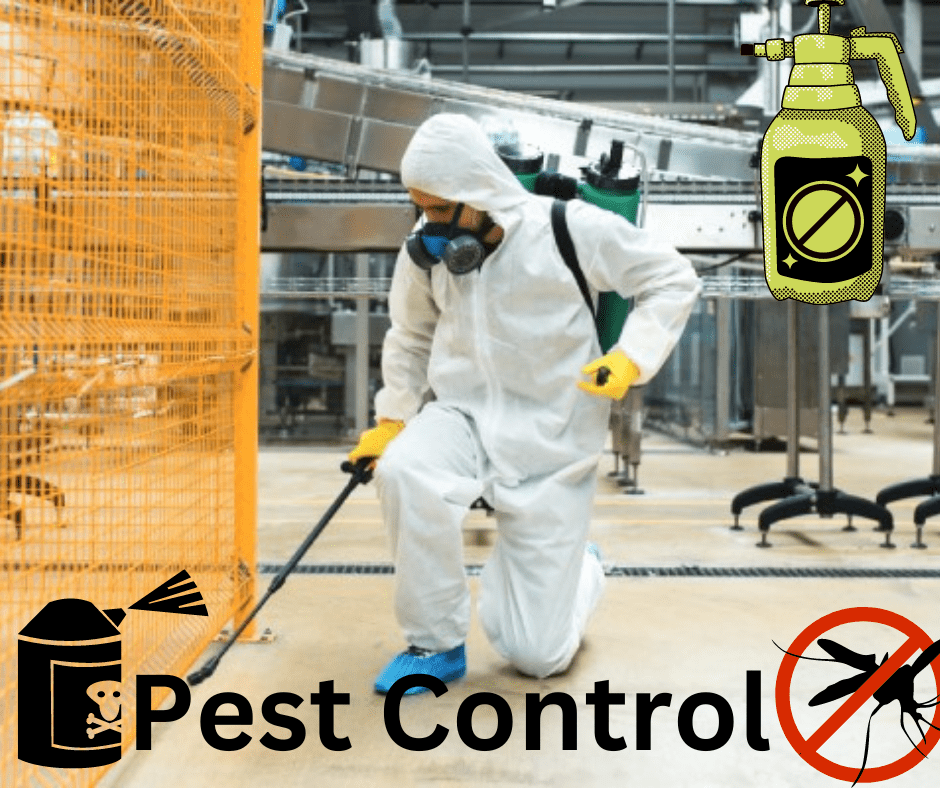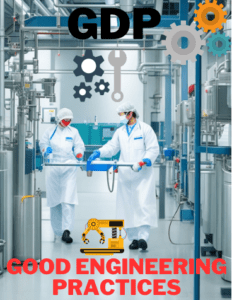Pest control in the pharmaceutical industry, where precision and uncompromising quality are paramount, effective pest control measures play a vital role in ensuring product integrity, safety, and regulatory compliance. The presence of pests within pharmaceutical facilities poses a significant risk, not only to the quality and efficacy of medications but also to the overall reputation of the company. In this article, we delve into the importance of pest control in pharmaceutical industries, exploring the challenges faced and the strategies employed to maintain a pest-free environment.

Pest control in pharmaceutical industries presents a unique set of complexities and challenges. These facilities must adhere to stringent regulatory requirements and maintain controlled environments to prevent contamination and product adulteration. The presence of pests such as rodents, insects, and birds can compromise the sterility and cleanliness of the production areas, storage facilities, and laboratories. Additionally, pests can serve as vectors for disease transmission, further highlighting the criticality of robust pest control measures.
Integrated Pest Management (IPM):
To address the intricate challenges posed by pests, pharmaceutical industries adopt an Integrated Pest Management (IPM) approach. IPM involves a comprehensive and proactive strategy that focuses on prevention, monitoring, and control of pests through a combination of techniques. These techniques include facility design modifications, regular inspections, sanitation practices, targeted treatments, and employee training. By integrating these methods, pharmaceutical industries create a harmonious and sustainable approach to pest control, minimizing the reliance on chemical interventions while maintaining high standards of efficacy.
Risk Assessment and Prevention:
An integral part of pest control in pharmaceutical industries is conducting thorough risk assessments. These assessments identify potential entry points, vulnerable areas, and conducive conditions for pest infestations. Armed with this knowledge, proactive preventive measures can be implemented, such as sealing cracks and crevices, installing pest-proof barriers, and ensuring proper waste management. By mitigating the risk of pest entry and establishment, pharmaceutical companies can prevent costly infestations and uphold product quality.
Environmental Monitoring:

Monitoring plays a crucial role in pest control within pharmaceutical facilities. Regular inspections and environmental monitoring systems are employed to detect signs of pest activity, including droppings, nests, or physical damage. These monitoring efforts help identify pest hotspots and allow for swift corrective actions to be taken. Integrated technologies, such as sensor-based traps and remote monitoring systems, provide real-time data, enabling early detection and targeted interventions.
Compliance with Regulatory Standards:
Pharmaceutical industries operate in a highly regulated environment, and compliance with regulatory standards is paramount. Regulatory bodies, such as the FDA (Food and Drug Administration), impose strict guidelines regarding pest control practices. Failure to meet these requirements can lead to severe consequences, including product recalls and legal repercussions. Therefore, pharmaceutical companies prioritize adherence to these standards, ensuring that their pest control programs are in line with regulatory expectations.
Continuous Improvement and Training:
Pest control in pharmaceutical industries is an ongoing process that requires continuous improvement and employee training. Regular audits and assessments are conducted to evaluate the effectiveness of pest control measures and identify areas for enhancement. This data-driven approach enables pharmaceutical companies to refine their pest control strategies, embrace new technologies, and stay ahead of emerging pest challenges. Additionally, comprehensive training programs are implemented to educate employees about pest identification, reporting procedures, and their role in maintaining a pest-free environment.

Important aspects of pest control in a pharmaceutical plant
| Aspect | Description |
|---|---|
| Regulatory Compliance | Adherence to strict regulatory standards and guidelines. |
| Integrated Pest Management | Implementation of a comprehensive approach for pest control. |
| Risk Assessment | Identification of potential vulnerabilities and entry points. |
| Preventive Measures | Implementation of measures to prevent pest infestations. |
| Environmental Monitoring | Regular inspections and monitoring for signs of pest activity. |
| Targeted Treatments | Application of specific treatments for effective control. |
| Employee Training | Education and training programs to raise awareness. |
| Continuous Improvement | Regular audits and assessments for program enhancement. |
| Documentation | Proper record-keeping of pest control activities. |
| Collaboration with Experts | Engagement with pest control professionals for guidance. |
Advantages of the Pest control
| Advantages | Description |
|---|---|
| Product Quality and Integrity | Prevention of contamination and preservation of product quality. |
| Regulatory Compliance | Adherence to regulatory standards and guidelines. |
| Consumer Safety | Protection of end-users from potential health risks associated with pests. |
| Reputation Management | Safeguarding the company’s reputation and brand image. |
| Cost Savings | Minimization of potential financial losses due to product recalls or damage caused by pests. |
| Compliance with Good Manufacturing Practices (GMP) | Fulfillment of GMP requirements for pharmaceutical manufacturing. |
| Risk Mitigation | Reduction of risks related to pest-borne diseases and damage to equipment or infrastructure. |
| Enhanced Employee Morale | Creation of a safe and hygienic working environment, boosting employee satisfaction and productivity. |
| Long-Term Sustainability | Implementation of eco-friendly pest control practices for a sustainable future. |
| Prevention of Regulatory Penalties | Avoidance of penalties and legal consequences for non-compliance. |

